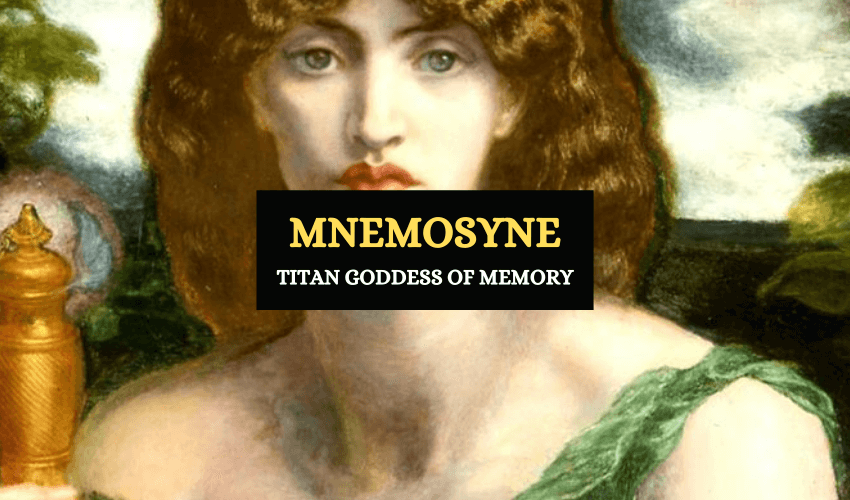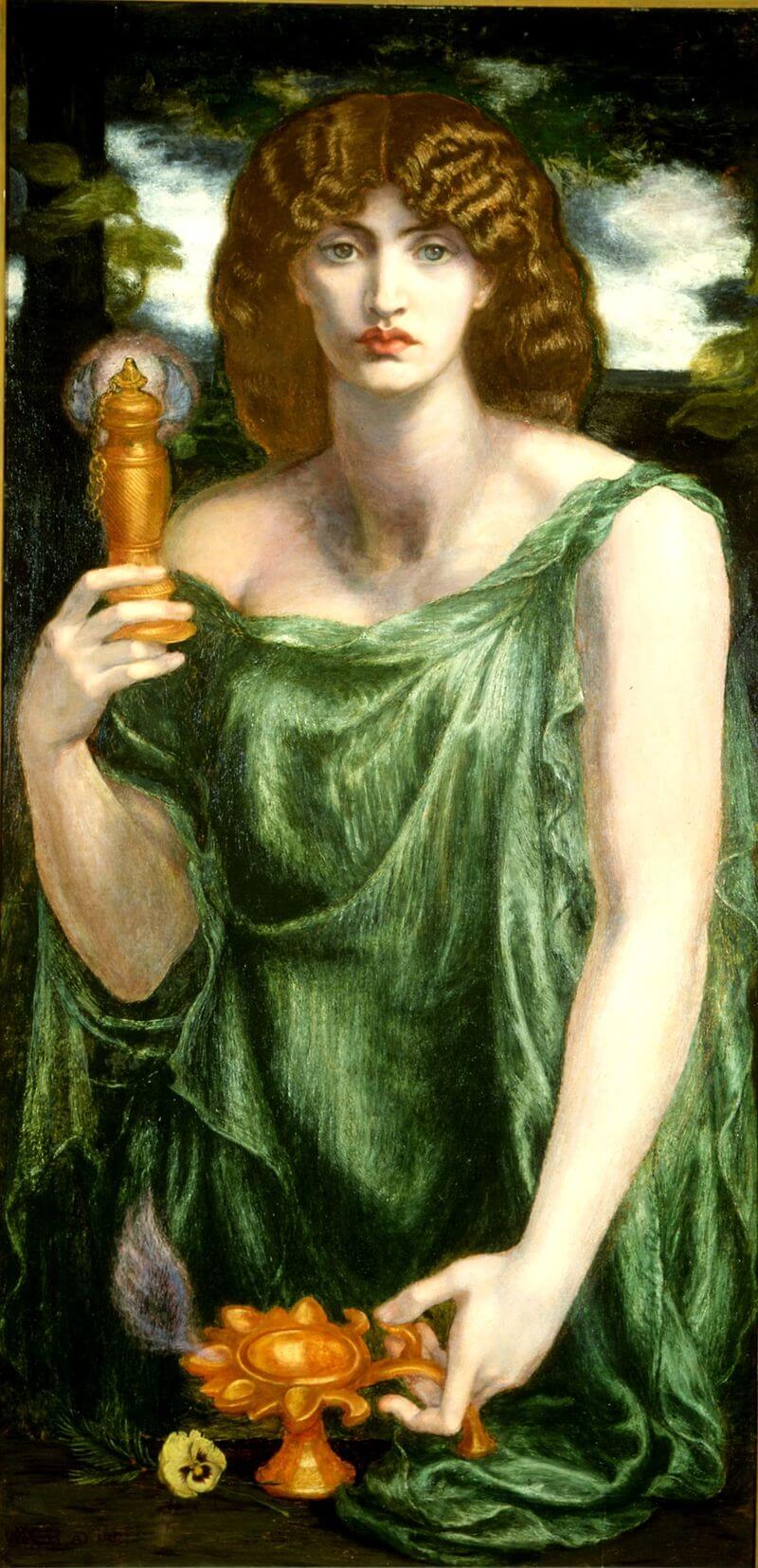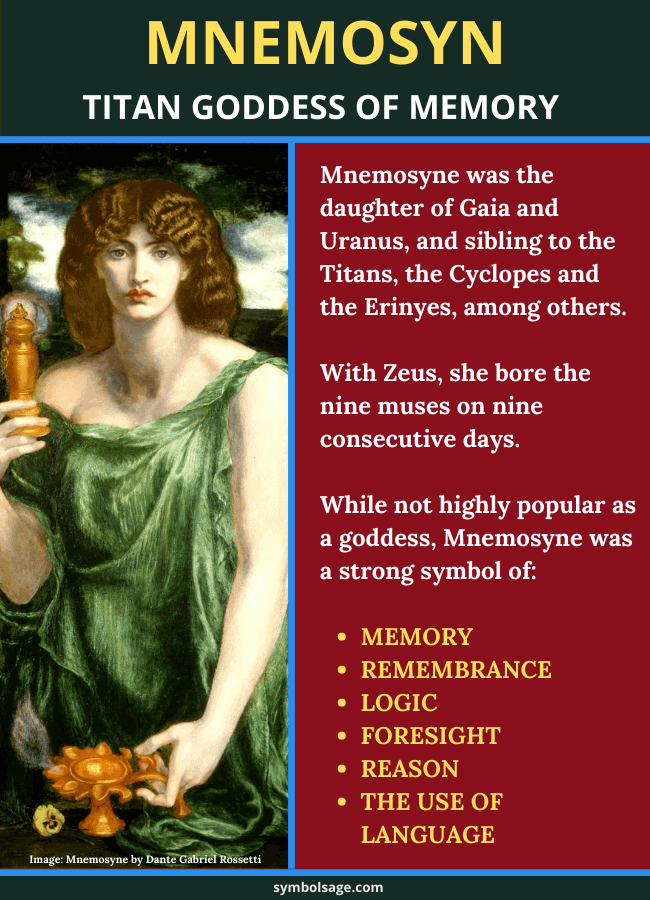
Table of Contents
Mnemosyne was a Titan goddess of memory and inspiration in Greek mythology. Poets, kings and philosophers called upon her whenever they needed help crafting persuasive and powerful oratory. Mnemosyne was the mother of the nine Muses, the inspirational goddesses of art, science and literature.
Although she’s one of the lesser known goddesses in Greek mythology, she’s considered to be one of the most powerful deities of her time. Here’s her story.
Mnemosyne’s Origins

Mnemosyne was one of the twelve children born to Gaia, the personification of earth, and Uranus, the sky god. She had several siblings, including the Titans Oceanus, Cronus, Iapetus, Hyperion, Coeus, Crius, Phoebe, Rhea, Tethys, Theia and Themis. She was also sister the Cyclopes, the Erinyes and the Gigantes.
Mnemosyne’s name was derived from the Greek word ‘mneme’ which means ‘memory’ or ‘remembrance’ and is the same source of the word mnemonic.
The Goddess of Memory
When Mnemosyne was born, her father Uranus, was the supreme god of the cosmos. However, he wasn’t the ideal husband to Gaia or father to their children and this angered Gaia greatly. Gaia began to plot against Uranus and soon she enlisted the help of all her children, especially her sons, to take revenge on her husband. One of her sons, Cronus, castrated his father with a sickle and took his place as the god of the cosmos.
Cronus ruled along with the other Titan deities in what became known as the Golden Age in Greek mythology. It was during this age that Mnemosyne became well known as a deity. She brought with her the ability use power of reason and memory. She was also associated with the use of language, which is why speech is also strongly connected with the goddess. Therefore, she was praised and owrshipped by anyone who needed help using persuasive rhetoric.
Mnemosyne in the Titanomachy
The Titanomachy was a 10 year war, fought between the Titans and the Olympians. Mnemosyne didn’t take part in the fighting and stayed aside with the other female Titans. When the Olympians won the war, the male Titans were punished and sent to Tartarus, but mercy was shown to Mnemosyne and her sisters. They were allowed to remain free, but their cosmic roles were taken over by the new generation of Greek deities.
Mnemosyine as the Mother of the Muses

Mnemosyne is best known as the mother of the nine Muses, all of whom were fathered by Zeus, the god of the sky. Zeus respected most of the female Titans, holding them in high regard and he was particularly taken with Mnemosyne and her ‘beautiful hair’.
According to Hesiod, Zeus, in the form of a shepherd, sought her out in the Pieria region, near Mount Olympus and seduced her. For nine nights in a row, Zeus slept with Mnemosyne and as a result, she gave birth to nine daughters on nine consecutive days.
Mnemosyne’s daughters were Calliope, Erato, Clio, Melpomene, Polyhymnia, Euterpe, Terpsichore, Urania and Thalia. As a group they were known as the Younger Muses. They turned mount PIerus into one of their homes and had their own sphere of influence in the arts.
Because Mnemosyne was the mother of the Younger Muses, she’s often confused with Mnema, a Greek goddess who was one of the Elder Muses. Since Mnema was also a goddess of Memory, the two were conflated. The similarities between the two were striking, including having the same parents. However, in the original sources, they’re two completely different goddess.
Mnemosyne and the River Lethe
After she gave birth to the Younger Muses, Mnemosyne didn’t appear in most mythological tales. However, in some parts of the Underworld, it’s said that there was a pool which bore her name and this pool worked together with the River Lethe.
The River Lethe made souls forget their previous lives so that they wouldn’t remember anything when they were reincarnated. The Mnemosyne pool, on the other hand, made anyone who drank from it remember everything, thereby stopping the transmigration of their soul.
The conjunction of the River Lethe and the Mnemosyne Pool was recreated in Lebadeia, Boeotia, at the Oracle of Trophonios. Here, Mnemosyne was considered a goddess of prophecy and some claimed that it was one of her homes. Anyone who wanted to hear a prophecy would drink the water of both the recreated pool and river to learn about the future.
Mnemosyne as a Symbol
The ancient Greeks considered memory as one of the most important and fundamental gifts, being the main difference between humans and animals. Memory not only helped humans remember but also gave them the ability to reason with logic and foresee the future. This is why they regarded Mnemosyne as a highly important goddess.
During Hesiod’s time, there was a strong belief that kings were under the protection of Mnemosyne and because of this, they could speak more authoritatively than others. It’s easy to see the importance that the Greeks attributed to the goddess by interpreting her family tree as a symbol.
- Mnemosyne was born to the primordial gods, meaning that she was a first generation goddess. This makes sense since there can be no reason or order in the world without memory.
- She was the sister of the Titans, most of who were personifications of inspiration and abstract ideas.
- She had nine children with Zeus, the greatest Olympian god and the most powerful. Since power depends to some extent on memory up, it was necessary for the powerful to have Mnemosyne nearby to gain her help. This was the only way for those with power to have the authority to command.
- Mnemosyne was the mother of the Young Muses which was very important to the ancient Greeks for whom art was considered almost divine and fundamental. However, artistic inspiration comes from memory which allows one to know something and then create.
Cult of Mnemosyne
While she wasn’t one of the most popular deities, Mnemosyne was a subject of worship in Ancient Greece. Statues of Mnemosyne were erected in the sanctuaries of most other gods and she was most commonly depicted with her daughters, the Muses. She was worshipped at Mount Helicon, Boeotia as well as in Asclepius’ cult.
A statue of Mnemosyne stands in Dionysos shrine at Athens, alongside statues of Zeus, Apollo and the Muses and another statue of her is found in the Temple of Athena Alea, with her daughters. People often prayed and offered sacrifices to her, in hopes that they would gain excellent memory and the ability to reason, which they needed to succeed in various areas of their lives.

In Brief
Although Mnemosyne was of great importance, she didn’t have her own symbols and even today, she’s not represented in a particular way like most other goddesses are. This could be because she signifies an abstract concept which is almost impossible to represent using concrete or tangible objects.








